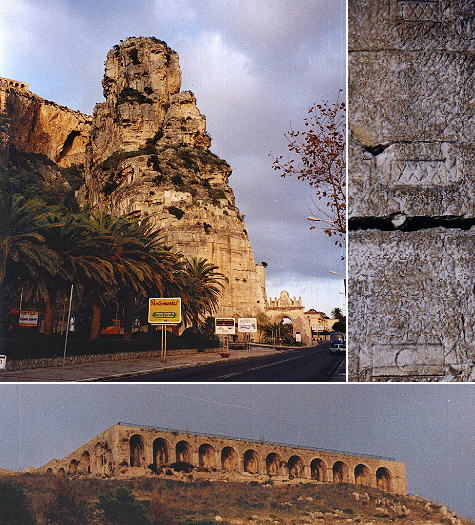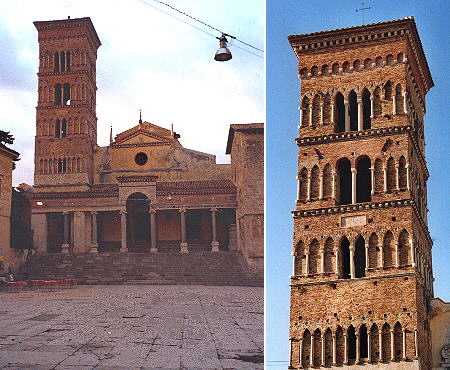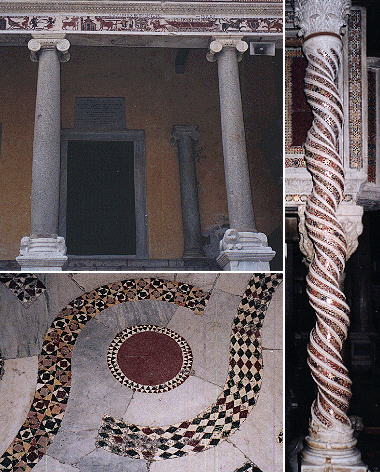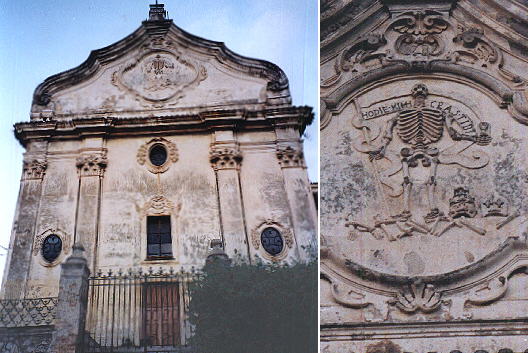  Ferdinand Gregorovius' Walks - Terracina
Gregorovius wrote Das Kap der Circe (Circe's Cape) in 1873 after Rome and Latium had
been annexed in 1870 to the Kingdom of Italy. To reach
Monte Circeo he first went to Terracina and from there he followed the road along the coast to
reach San Felice Circeo. The first part of this account gives a brief
description of Terracina.
The cut is 120 Roman feet deep (36 meters) and the cutters marked on the rock the progress they were making. The Acropolis was embellished with large temples for which the Romans needed to build a terrace and the vaults supporting the terrace are still visible today, while the temples were sacked and destroyed (also by earthquakes). Terracina was sacked by the Visigoths and raided by the Saracens: only when the Italian maritime republics of Amalfi and Pisa secured the Tyrrhenian Sea, Terracina could prosper again.
The main evidence of this wealth is the Cathedral built on the Temple of Rome and Augustus. The pavement of the square in front of the cathedral is the pavement of the Roman Forum. The bell tower shows the influence of Sicilian architects.
Several fine Roman columns were used to erect the cathedral both in the portico and in the interior. An unusual frieze of Sicilian style fills the right part of the portico: it is most likely an ex-voto, an offering made in compliance with a wow (the background of this page makes use of a detail of the frieze). In the interior many fine examples of cosmatesque decorations. Terracina declined again in the XIVth century and only in the late XVIIIth century its economy was improved by the initiatives of Pius VI, who attempted to reclaim the marshes near the town.
Chiesa del Purgatorio is the only (late) baroque church of Terracina. The relief on the fašade is typical of the XVIIIth century fashion for a very direct representation of death. Gregorovius completed his account of Circe's Cape by visiting San Felice Circeo. Introductory page on Ferdinand Gregorovius Other walks: The Roman Campagna: Palestrina Genazzano Paliano Anagni The Ernici Mountains: Ferentino Alatri From Anzio to Torre Astura: Anzio Nettuno and Torre Astura The Volsci Mountains: Valmontone and Colonna Segni Norma Cori The Orsini Castle in Bracciano Subiaco, the oldest Benedictine monastery See my Home Page on Baroque Rome or my Home Page on Rome in the footsteps of an XVIIIth century traveller. |
All images © 1999 - 2003 by Roberto Piperno. Write to romapip@quipo.it



